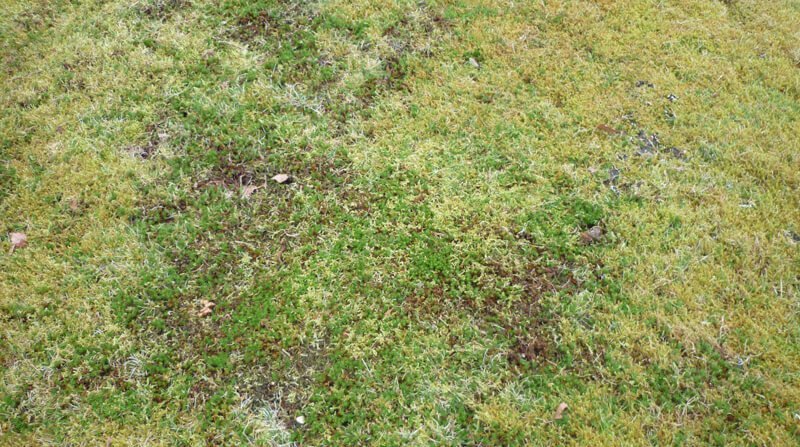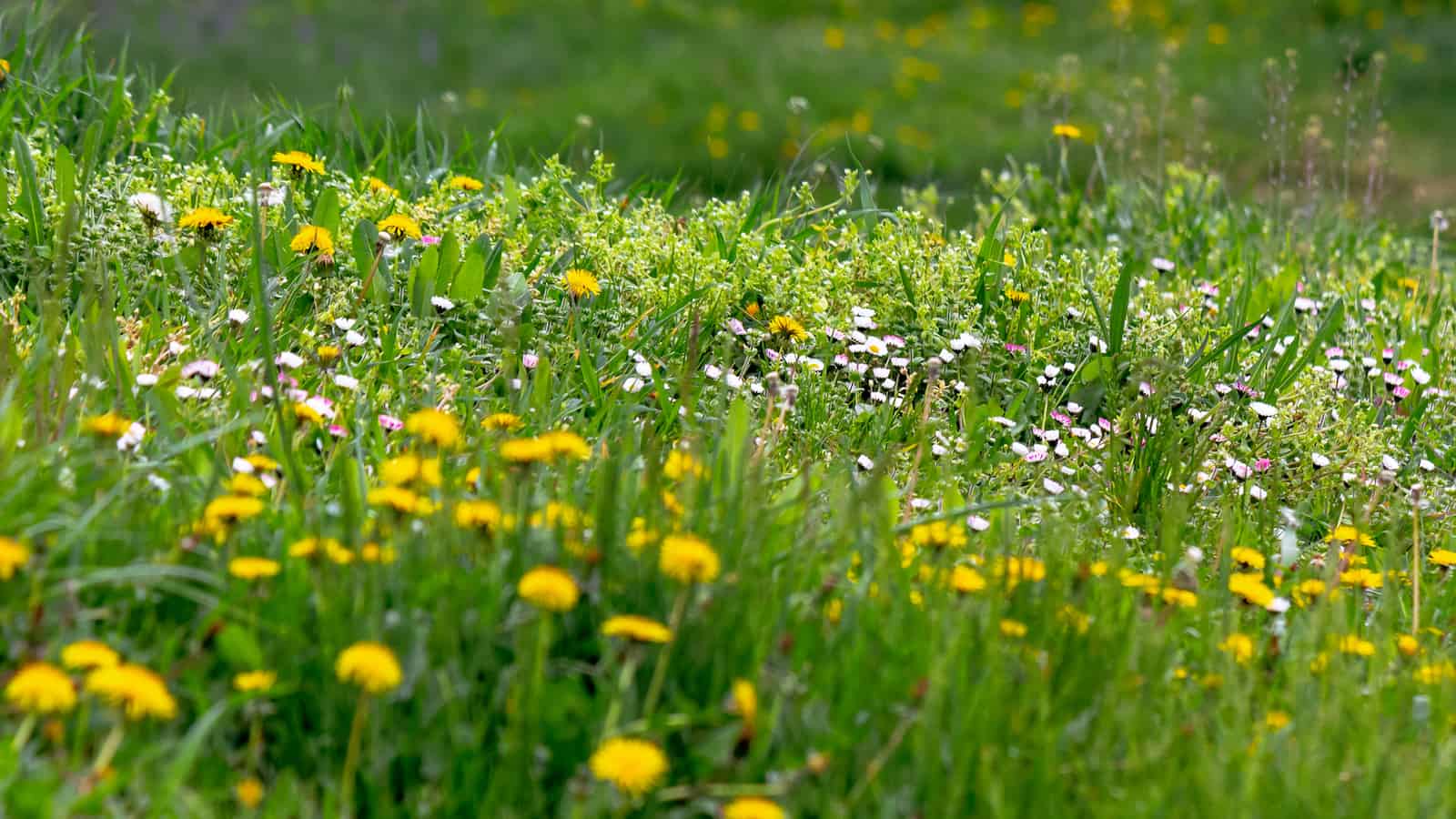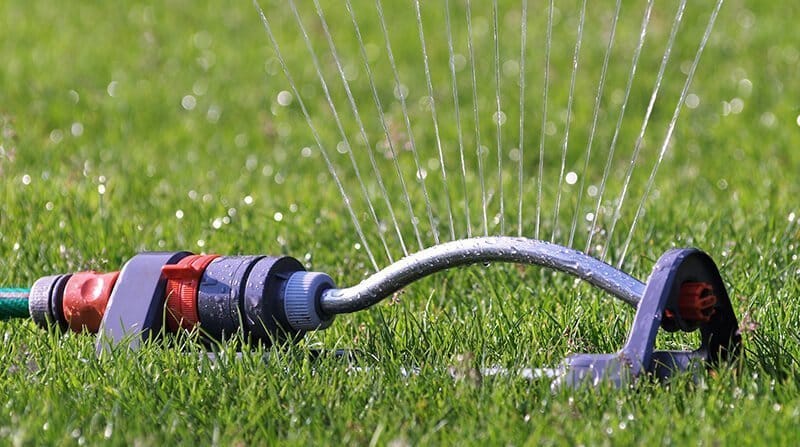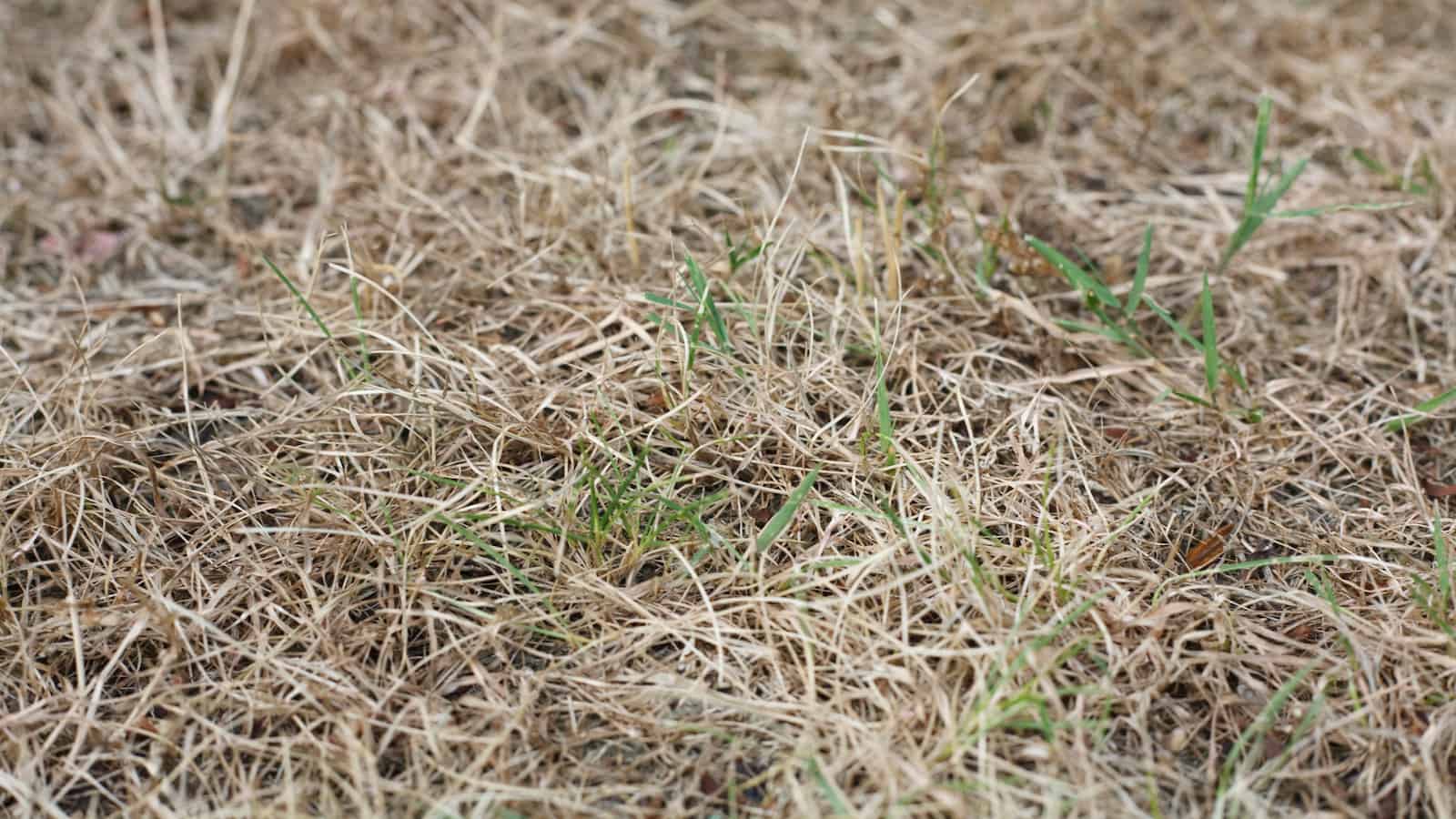Did you wake up one day and notice that your lawn has been consumed by a mass of brown grass?
Does your brown lawn also look like it’s thinning out? Are you concerned you might soon have a dead lawn?
If you are struggling to determine if you have a dead lawn or a dormant lawn, this is the article for you. Here, we will be discussing topics such as:
- Identifying a dormant lawn
- Why your grass goes dormant
- Identifying a dead lawn
- What causes grass to die in your entire lawn
- A side-by-side comparison of dormant grass and dead grass
- Ways to prevent your grass from dying
Dormant Grass vs. Dead Grass
Dormant and dead grass can often look similar, whether you’re dealing with turf grass, cool-season grass, or any other kind of grass plant.
This can cause a problem in a homeowner’s lawn care efforts, as many people will frequently exacerbate the issue or kill an otherwise healthy lawn by treating the wrong problem.
Having the ability to tell the difference between whether the grass is lying dormant or is completely dead will help provide proper treatment.
Identifying Dormant Grass
The grass in your lawn goes dormant mainly to protect itself from unfavorable weather conditions that can make your lawn become weak and even diseased.
The grass itself turns brown because it dies. However, that doesn’t mean the entire lawn is dead. The roots below the surface of the soil are actually still very much alive and preserved.
The survival of your lawn doesn’t require the grass blade above the surface to remain intact. So, discoloration of the lawn isn’t a sure sign it is destroyed.
Here are the signs that your grass is dormant:
- Grass growth is stunted
- It will liven up when you’re watering the grass plant
- Dormant grass won’t lift easily
- Healthy grass will have white roots
- Healthy grass will have healthy green crowns and stalks
Reasons for Dormant Grass
The biggest contributor to grass going dormant has to do with the weather, mainly during the cold winter months.
During this winter dormancy, your grass is hunkering down and utilizing the water and nutrition it needs conservatively. This means it keeps the roots and structure below the surface alive while allowing the blades to die off in order to regenerate when things warm up.
On the other hand, you will find grass can also go into a dormant state during the warm season in the summer months, especially if you have cool-season grass.
This summer dormancy will always take effect during hot summer seasons and droughts so the grass can survive without a large supply of water.
Access Thatch on Your Lawn

For the most part, a small amount of thatch buildup on your lawn shouldn’t pose too much of a threat to your grass. However, when the thatch becomes abundant, it can cause your lawn to go dormant.
Because thatch is a layer of dead grass sitting on top of live lawns, it can become too heavy, eventually suffocating your grass and causing it to enter a dormant state in order to survive.
Identifying Dead Grass
Grass will die in harsh weather conditions. However, this isn’t often a major cause of dead lawns.
There are tons of things that contribute to dead or dying grass patches, and many of them can be avoided or easily treated.
Reasons Grass Will Die
Here is a list of reasons many people find dead patches of grass on their property.
Fungus and Disease
Fungus, mold, and mildew are all huge complications for many, making an otherwise fantastic landscape look terrible.
Fungus is mostly the result of overwatering your lawn or poor aeration and drainage in the soil. Pooling water is a popular breeding ground for bacteria that can and will attack your plant’s roots, quickly killing them.
Animal Activity
Pests in the form of insects and animals are another common problem for homeowners. If you notice holes all around your lawn that pop up for seemingly no reason, you probably have some sort of infestation or animal activity going on.
Improper Maintenance
Yes, it is true: you can be the reason your lawn is dying. A lot of people will opt to cut their grass really short in order to prolong the next mowing session. While doing this may hold off the job at hand for a few more days, it can weaken the grass and eventually kill it.
You could also be over or underwatering your grass which can also easily kill it. Too much water can drown the roots, causing them to die and then rot, spreading mold to the rest of the lawn.
If you don’t water it enough, your lawn can burn and dehydrate.
Weeds and Debris

Weeds growing in the same location as your grass can also cause dead patches. Weeds are intrusive plants that will overwhelm and smother your grass roots, causing them to die fairly quickly.
Another natural occurrence that can contribute to lawn problems is debris lying around on the yard surface. Things to be wary of include:
- Sticks and logs
- Storage bins
- Garbage receptacles
- Rock piles
- Leaf piles
Animal Urine (Dog Pee)
Urine isn’t something that will destroy a lawn every time your dog goes out to relieve itself.
However, when a pet picks a specific spot they enjoy going to, the nitrogen in dog pee can overwhelm that patch of grass, eventually killing it.
Thatch Buildup
Yes, we already used this when identifying dormant grass. However, thatch can also lead to dead grass. If the thatch buildup in one particular area becomes overwhelming, it can and will kill your lawn.
Signs your grass is dead:
- Dead grass will lift up right away
- Watering your grass doesn’t seem to help at all
- There is a presence of grub or an abundance of insect activity
- It’s black, white, or pink/red, not just brown
- It has an almost sponge-like feeling when it’s stepped on
A Quick Overview
Here is a quick overview of what has been discussed in this article to help you quickly determine whether your grass is dead or just lying dormant.
| Conditions | Dead Grass | Dormant Grass |
|---|---|---|
| Gets better with water | No | Yes |
| Lifts when pulled on | Yes | No |
| Turns colors | Yes, pink, white, black, red | No, usually just brown |
| Has white roots, | No | Yes |
| Only occurs during specific seasons | No | Yes (most frequently during winter months and droughts) |
| Has a spongy bounce | No | Yes |
| Has a presence of thatch | Yes, a high presence | Yes, a small presence |
How to Prevent Your Lawn From Dying
There is little you can do to prevent your lawn from going dormant. This happens when there is a need for self-preservation during natural occurring conditions in your area.
However, there are many ways you can work at preventing your grass from dying, eliminating the need to treat it with long, and sometimes expensive, tasks.
Make Sure Your Lawn Has a Proper Irrigation System

Water and air are the two main sources required to keep grass healthy and strong. Make sure the soil in your yard is well aerated and provides plenty of drainage so pooling isn’t possible.
You also want to keep a good schedule for watering and know how much your specific grass species needs. Warm-season grass will require more water than cool-season grass; keep this in mind when planning your schedule.
Keep an Eye on Things
We highly recommend that you stay vigilant when tending to your lawn. Make sure there aren’t early signs of trauma, activity, or infestations.
If you see slight discoloration, dryness, or mildew, treat the grass as soon as possible to stop it from getting too far.
Maintain Your Property
Make sure your lawn is clean and clear of debris and pooling water. Make sure you take the time to mow your grass properly and only cut it about one-third of the way down to the soil.
You can also add fertilizer to provide much-needed nutrients to keep your grass growing thick and strong.
Summing Things Up
Although dead and dormant grass can have tons of similar identifying features and traits, they are extremely easy to tell apart once you know what to look for.
Knowing what problem you are dealing with will give you a much better idea of how to treat your grass and what to treat it with.

